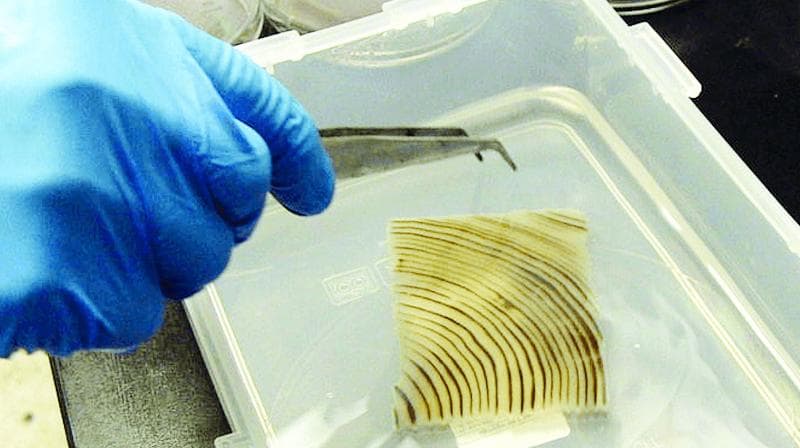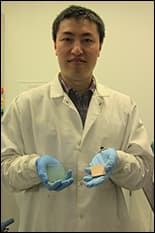Transparent Wood Stronger Than Glass Developed For Futuristic Applications
In what could prove to be an amazing breakthrough, scientists at University of Maryland have succeeded in making a block of linden wood transparent, which they quote will be useful for fancy building materials and in light-based electronics systems. The <a href="https://www.crazyengineers.com/threads/transparent-wood-could-potentially-help-light-up-homes.87984">Transparent Wood Could Potentially Help Light Up Homes</a> has been developed by a two way process- first the team of researchers removed a molecule called lignin in wood by boiling the wood in water with sodium hydroxide and other chemicals for roughly two hours.

This flushed out lignin, responsible for making wood rigid and dark in color; the colourless structure left behind of cellulose cell components, was further filled with epoxy, that made the wood four to five times stronger. The xylem and phloem structures, scientists quote could be seen as vertically aligned channels in the wood, that can be used to pass light along, after the wood has been treated.
In traditional material the light gets scattered, however owing to this waveguide effect with wood, more light can come into the house. The material could have a wide range of applications from everyday uses such as wood furniture to more advanced applications of structural materials in automobiles and optoelectronics. However due to the nature of the wood’s nanostructures, there occurs a diffusion of light which can be lessened by the last part of the process- to treat the wood with an index-matching polymer resin.

Dr. Mingwei Zhu with the block of Transparent Wood
The process though still in nascent stages could effectively replace glass and plastic in the long run with shatterproof wind shields in cars and clear building materials in future. The results were published in the journal Advanced Materials.
Source: #-Link-Snipped-#

This flushed out lignin, responsible for making wood rigid and dark in color; the colourless structure left behind of cellulose cell components, was further filled with epoxy, that made the wood four to five times stronger. The xylem and phloem structures, scientists quote could be seen as vertically aligned channels in the wood, that can be used to pass light along, after the wood has been treated.
In traditional material the light gets scattered, however owing to this waveguide effect with wood, more light can come into the house. The material could have a wide range of applications from everyday uses such as wood furniture to more advanced applications of structural materials in automobiles and optoelectronics. However due to the nature of the wood’s nanostructures, there occurs a diffusion of light which can be lessened by the last part of the process- to treat the wood with an index-matching polymer resin.

Dr. Mingwei Zhu with the block of Transparent Wood
Source: #-Link-Snipped-#
0
